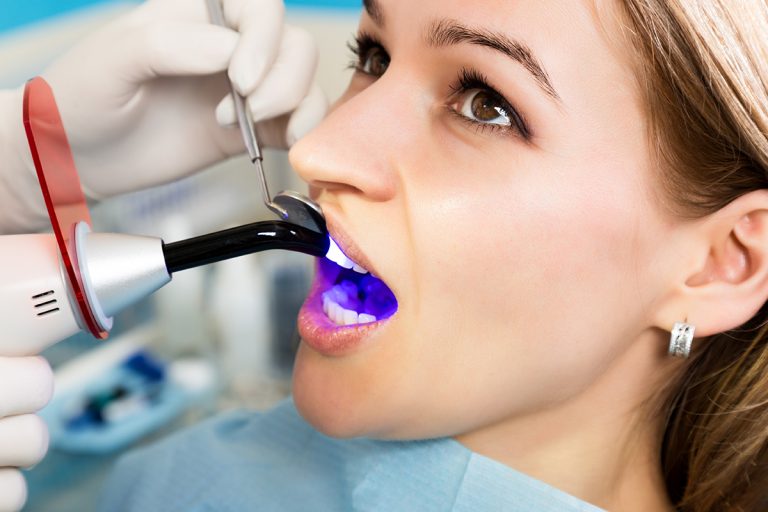
Restorative Dentistry
Restorative dentistry is a branch of dentistry dedicated to restoring the function, structure, and aesthetics of teeth that have been damaged or lost due to decay, trauma, or disease. It aims to bring back the ability to chew, speak, and smile confidently by repairing or replacing damaged teeth. Restorative treatments not only improve the appearance of the smile but also help maintain optimal oral health by addressing issues that can lead to further complications if left untreated. These procedures are tailored to each patient’s specific needs and are designed to provide long-lasting solutions that restore both the function and appearance of the teeth.
Partial Dentures
Partial dentures are removable dental appliances designed to replace one or more missing teeth, helping restore both function and aesthetics. They are custom-made to fit comfortably in the mouth and can be crafted from materials such as acrylic, metal, or a combination of both. Partial dentures offer a variety of benefits, including:
- Functionality: Partial dentures restore the ability to chew and speak properly by filling the gap left by missing teeth. This makes eating and speaking more comfortable and efficient.
- Aesthetic Improvement: Partial dentures are designed to blend seamlessly with the natural teeth, providing a natural-looking smile.
- Versatility: Whether you have one or multiple missing teeth, partial dentures can be adjusted to suit your specific needs. They are a flexible solution that can be adapted to various situations.
- Preventing Shifting: By filling in the gaps, partial dentures help prevent neighboring teeth from shifting out of place, which can occur when there are empty spaces in the mouth.
Partial dentures can be an excellent option for individuals who have lost several teeth but are not candidates for more invasive procedures, such as dental implants or bridges.
Dental Onlays
Dental onlays are custom-made restorations designed to repair teeth that are damaged by decay or trauma, but not severely enough to require a full crown. Onlays are typically made from porcelain, gold, or composite resin, and they cover the chewing surface (cusps) of the affected tooth, restoring its shape and function. Key features of dental onlays include:
- Durability and Strength: Onlays are designed to withstand the forces of chewing and biting, providing long-lasting strength and protection to the tooth.
- Minimal Tooth Removal: Onlays are less invasive than crowns because they require the removal of less healthy tooth material, preserving more of the natural tooth.
- Aesthetic Appeal: Porcelain onlays are highly aesthetic, as they closely resemble the appearance of natural teeth, making them an ideal choice for restoring teeth in visible areas of the mouth.
- Fit and Comfort: Since onlays are custom-made to fit each tooth precisely, they provide a comfortable and secure fit, reducing the risk of irritation or discomfort.
Onlays are often used for teeth with larger cavities or damage, as they provide a conservative yet effective solution to restore the tooth’s appearance and functionality.
Root Canal Therapy
Root canal therapy, also known as endodontic treatment, is a procedure aimed at saving a tooth that has been infected or severely damaged. The infection typically occurs in the pulp, the soft tissue inside the tooth, which contains nerves and blood vessels. When the pulp becomes infected due to deep decay, trauma, or cracks in the tooth, it can cause severe pain, swelling, and other complications. Root canal therapy involves the following steps:
- Removing Infected Pulp: The dentist removes the infected or damaged pulp from inside the tooth to eliminate the source of infection.
- Cleaning and Shaping the Root Canals: After the pulp is removed, the root canals are thoroughly cleaned and shaped to prepare for sealing.
- Sealing the Root Canals: The cleaned root canals are sealed with a biocompatible material, usually gutta-percha, to prevent future infections.
- Restoration of the Tooth: After the root canal is sealed, the tooth is restored with a filling or crown to protect it from further damage and restore its full function.
Root canal therapy is highly effective at saving teeth that would otherwise need to be extracted due to infection or damage. This procedure allows patients to retain their natural teeth, which is beneficial for preserving the integrity of their bite, preventing jawbone loss, and maintaining proper alignment of remaining teeth.
Why Restorative Dentistry is Essential:
Restorative dentistry plays a critical role in maintaining optimal oral health by addressing issues that affect the functionality and aesthetics of teeth. Procedures like partial dentures, dental onlays, and root canal therapy are designed to repair or replace damaged teeth, restore lost functionality, and help prevent further dental problems.
These treatments also improve the patient’s quality of life by enabling them to eat and speak more comfortably and confidently. Moreover, restorative dentistry helps preserve the alignment of the remaining teeth, preventing complications such as shifting, bite problems, and even jawbone loss, which can occur if missing teeth are not replaced.
By choosing restorative dental treatments, patients can maintain a healthy and beautiful smile for years to come, ensuring that their teeth and gums stay in optimal condition. Whether you’re dealing with tooth decay, damage, or tooth loss, restorative dentistry offers effective solutions tailored to your individual needs, helping to restore your smile and oral health to its fullest potential.
